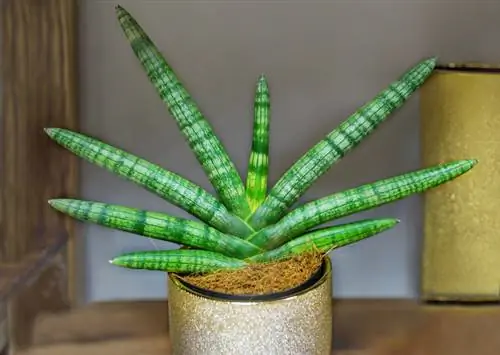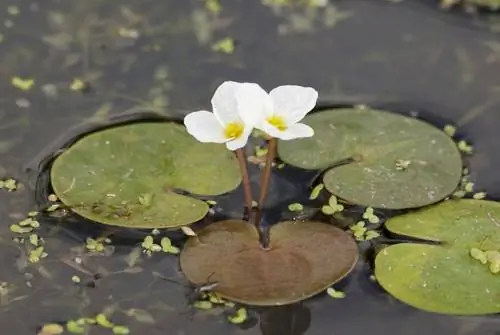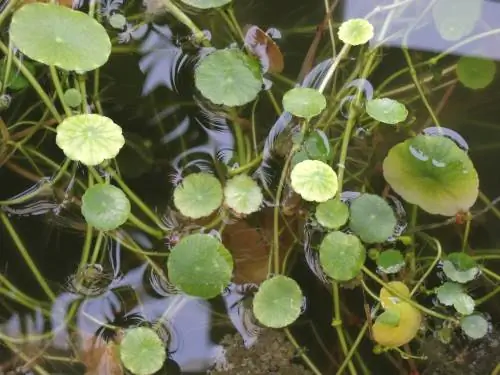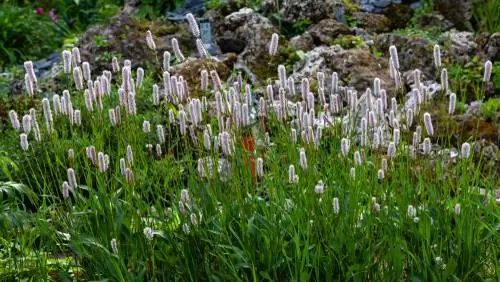- Author admin [email protected].
- Public 2023-12-16 16:46.
- Last modified 2025-06-01 06:02.
To keep the water in your garden pond he althy and clean, it makes sense to use some aquatic plants that are known for producing a lot of oxygen. In this guide you will get practical tips!

Which aquatic plants produce oxygen for the garden pond?
Aquatic plants that produce oxygen improve the water quality in the garden pond and prevent algae growth. Good oxygen suppliers include water buttercup, hornleaf, waterweed and pondweed. Use about five bunches of such plants per 1000 liters of water.
What do oxygen plants do in the garden pond?
Oxygen plants - i.e. aquatic plants that produce abundant oxygen - grow under water. They absorb nutrients from the water through the leaves and release oxygen as a kind of thank you.
In this way, the oxygen-supplying aquatic plants form an important basis for the natural balance in the pond. They help ensure that the water quality remains high. This means they keep the water clear and he althy and prevent algae growth.
This is important for the aquatic plants to thrive
In order to thrive and fully exploit their oxygen supply capabilities, aquatic plants need good basic conditions, which look like this:
- lots of light
- Temperature from twelve to 25 degrees Celsius
- plenty of nutrients in the water
- CO2 (from pond fish)
Attention: If oxygen plants do not grow or only grow poorly, this is usually due to insufficient expression of one or more of the conditions mentioned.
Which plants are good suppliers of oxygen?
Not all aquatic plants are diligent suppliers of oxygen. In principle, you need to know that only underwater plants produce oxygen (floating plants have other advantages).
In addition, it should be borne in mind that not all oxygen plants produce oxygen all year round. That's why you should pay attention to a suitable combination of aquatic plants.
- Spring and winter: Water buttercup (Ranunculus aquatilis)
- Summer and autumn: hornleaf (Ceratophyllum demersum), waterweed (Elodea) or pondweed (Potamogeton)
Other well-known oxygen plants for the garden pond are:
- Water feather (Hottonia palustris)
- Fir fronds (Hippuris vulgaris)
How to plant oxygen plants in the pond?
Place the oxygen plants under water in special growing medium, sand, gravel or clay balls.
While aquatic plants in nature root directly into the ground, you should not force this in your garden pond at home - especially if there is a liner on the ground or you have a pond basin.
It is therefore advisable to always use plant baskets (€1.00 on Amazon) for the oxygen plants. The seals and tapes must first be removed from these.
Note: Place oxygen plants ONLY in a pond with he althy water quality. Under no circumstances should you place the plants in a garden pond that is already covered in algae. The aquatic plants cannot thrive in such an uncomfortable environment (algae rob all the CO2 from the water).
A rule of thumb to conclude this guide: five bunches of oxygen plants per 1000 liters of water are optimal.






